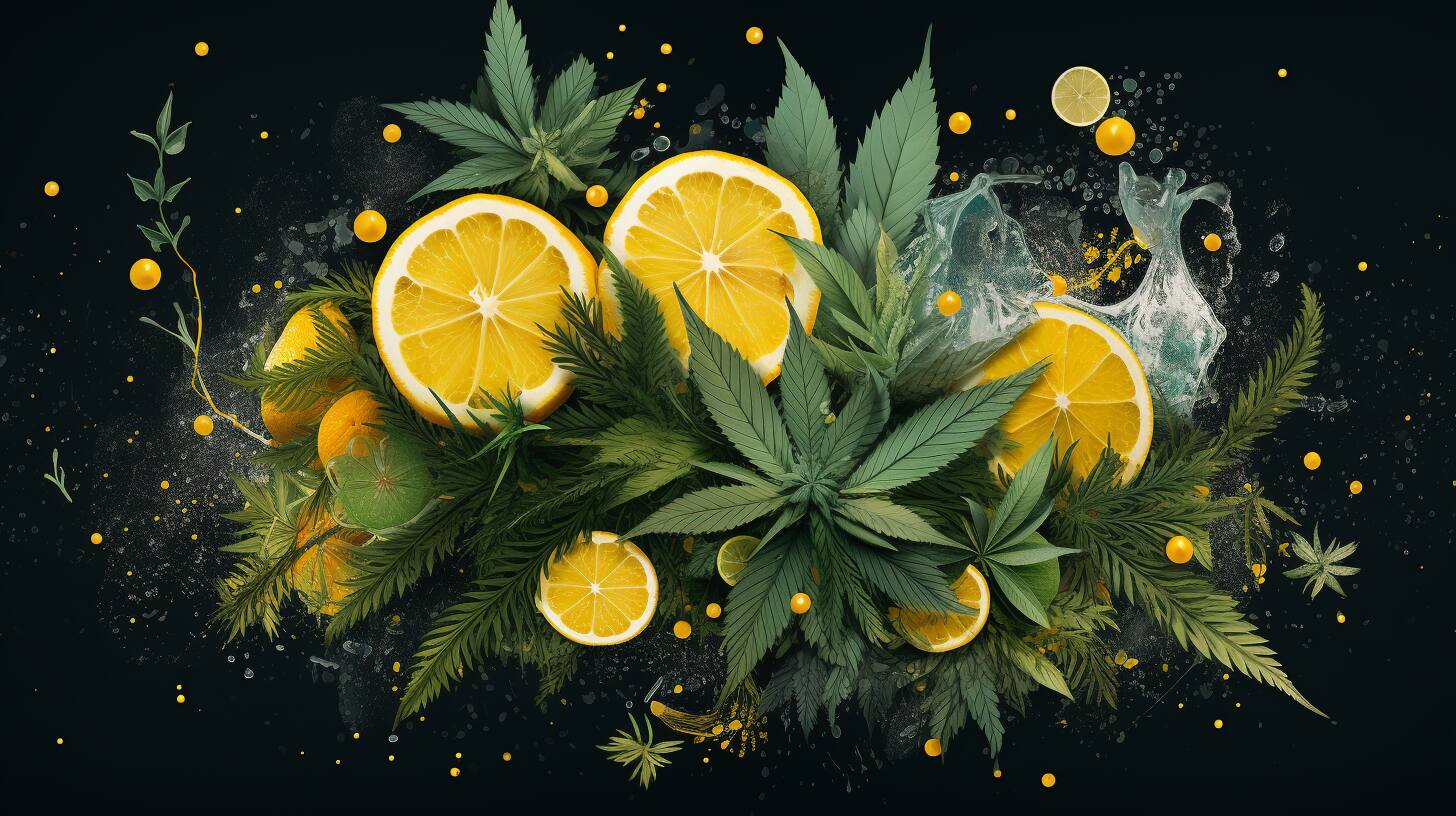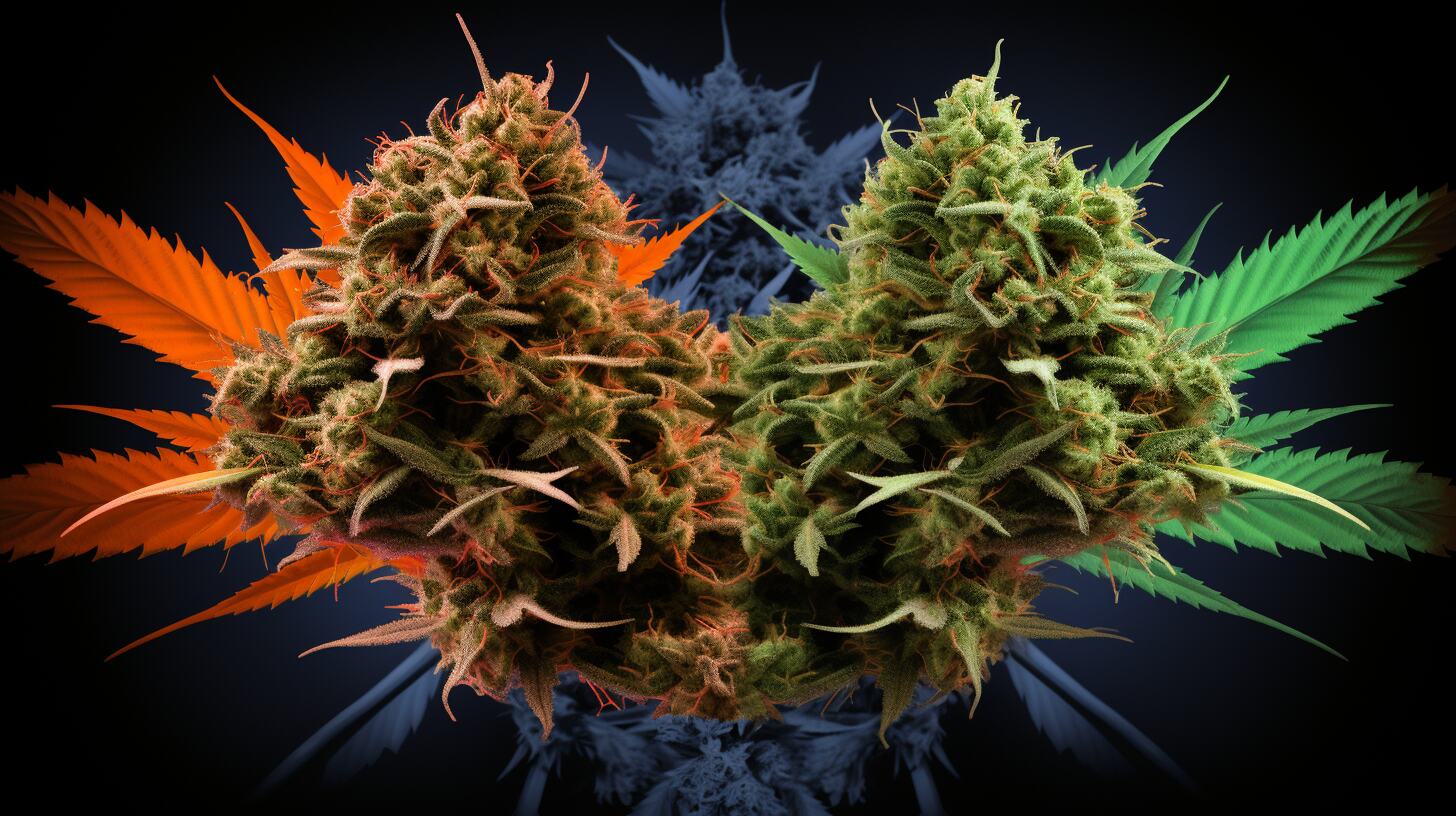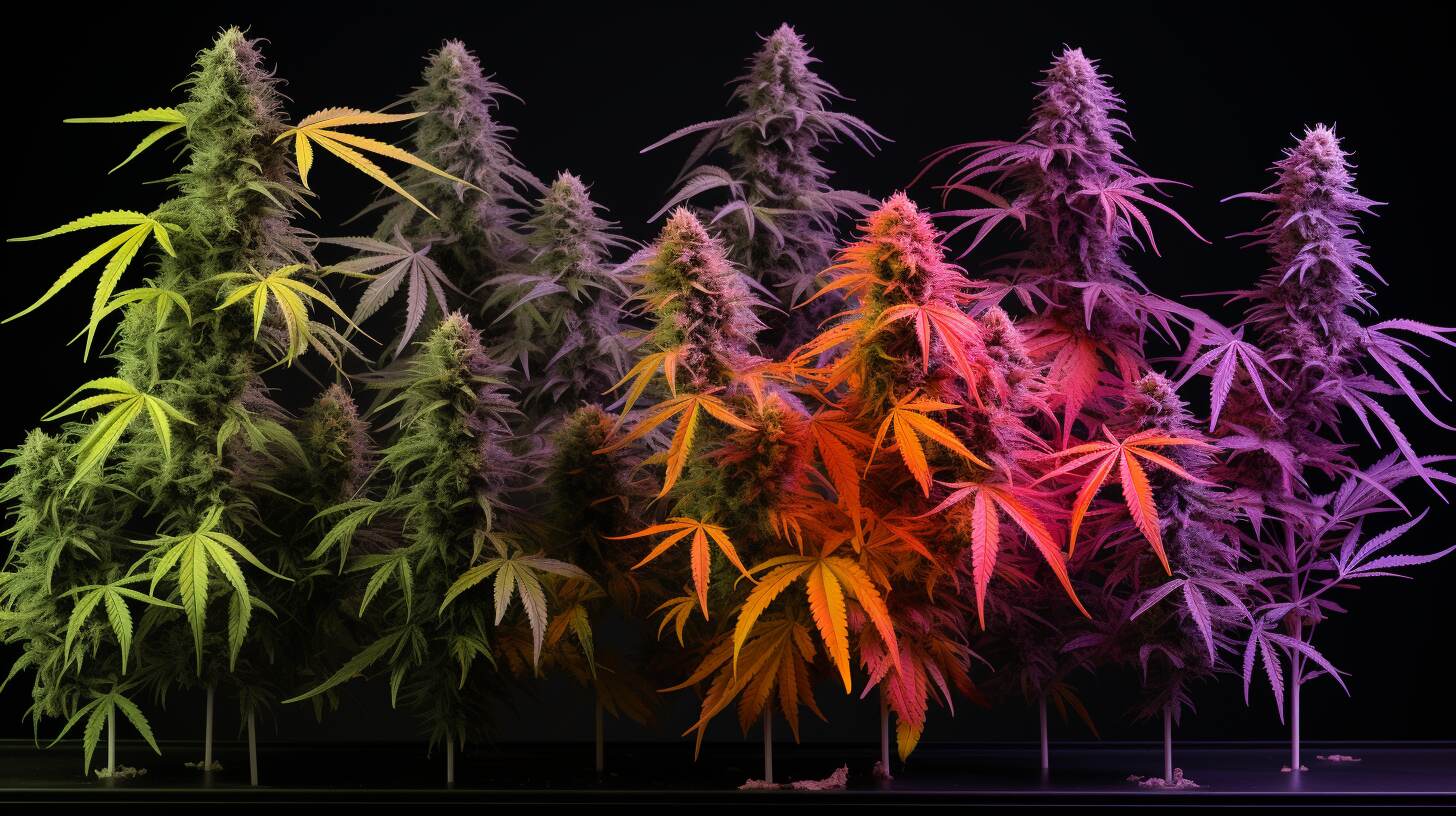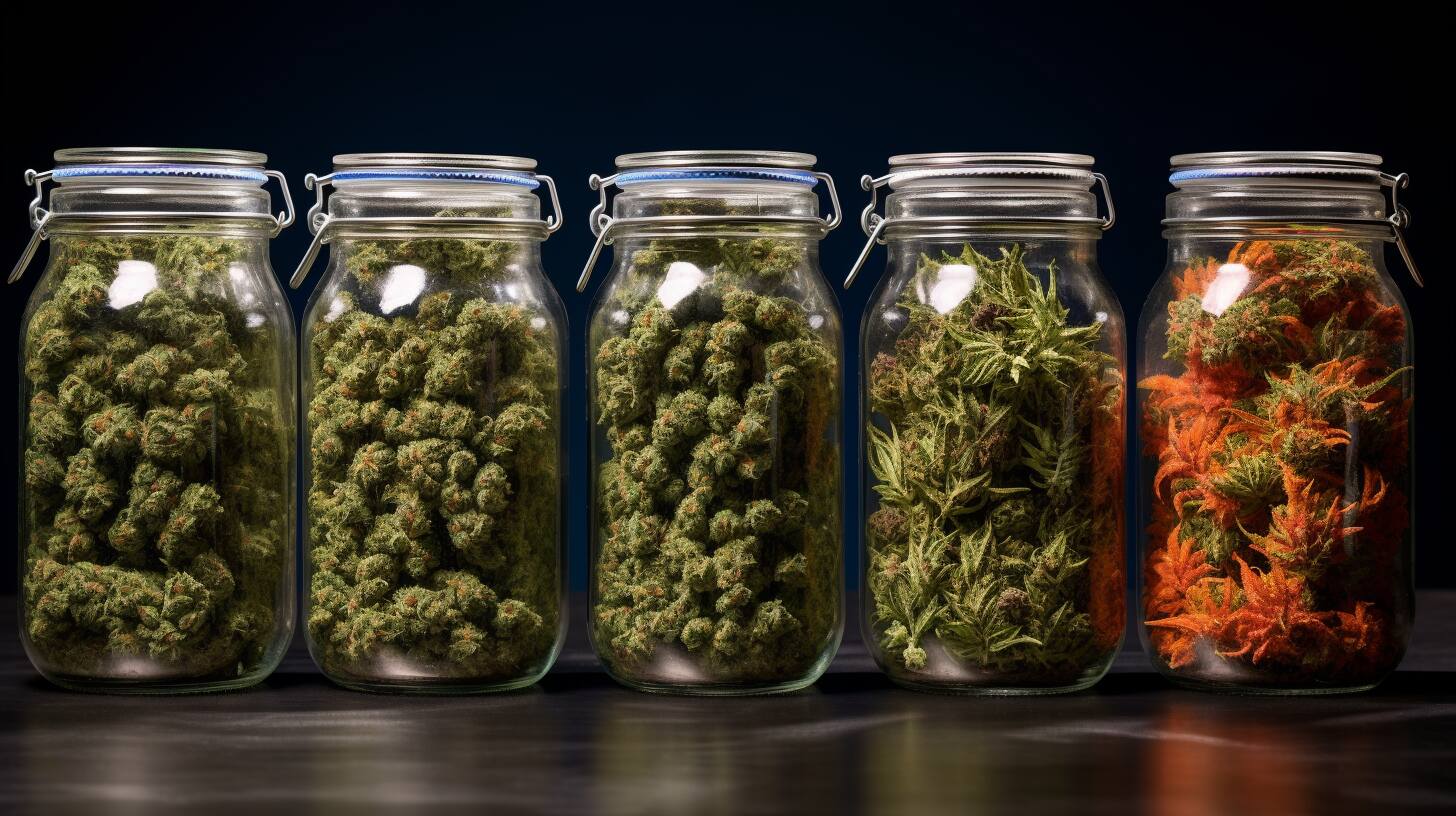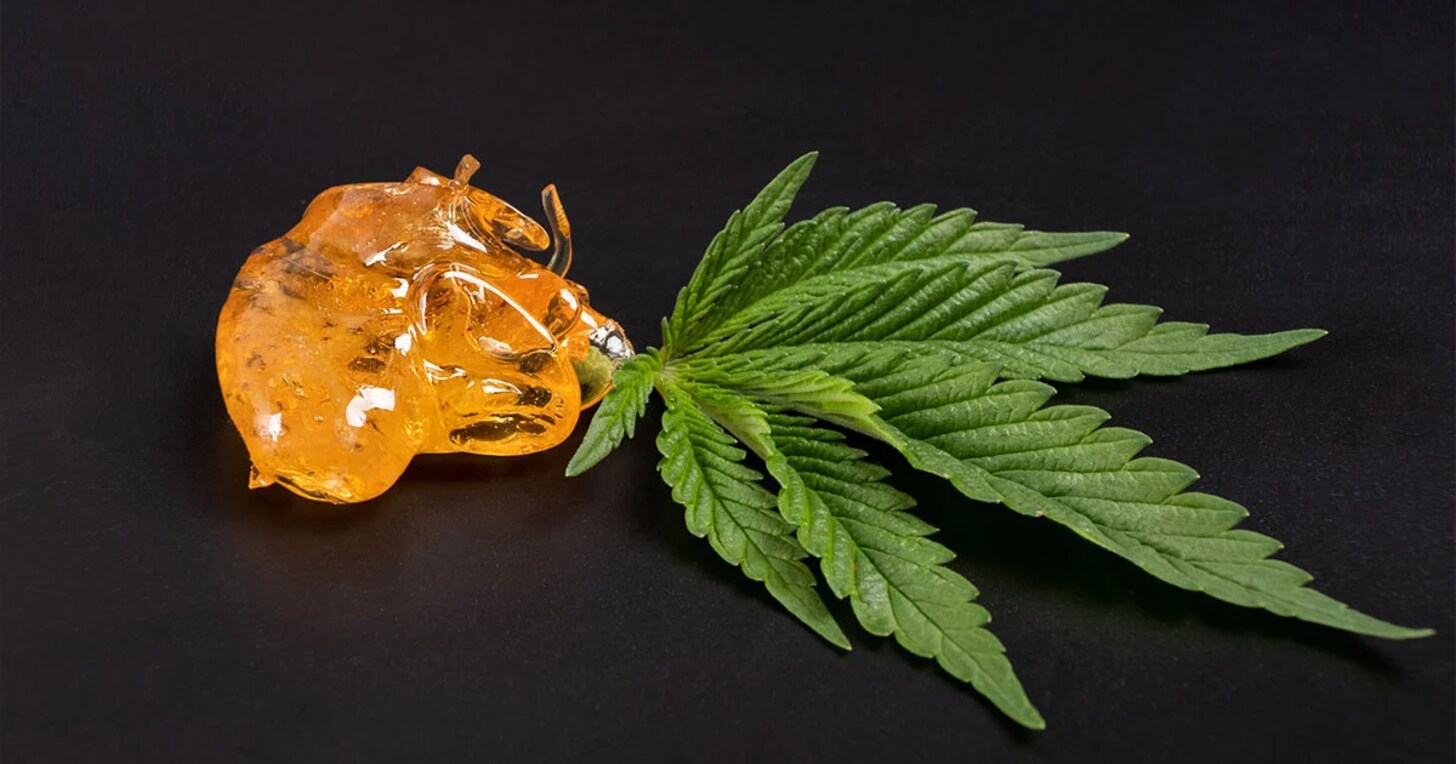Weed flavoring is an intricate and fascinating art form. It is often overlooked by those outside the industry. This process affects the taste of the final product. It also impacts the overall quality and effect. The process of flavoring weed begins before harvest and continues after. Each stage is important in shaping the user's final experience.
Every step in the process, from cultivating to curing, has a purpose. The goal is to improve and protect the plant's unique flavors.
Join us on a captivating journey of taste and scent. We will delve deep into the art of weed flavoring, exploring it from mid-growth to post-harvest.
Understanding Weed Flavouring
Terpenes are aromatic compounds found in plants, like cannabis. They give plants their unique scent and flavor. Cannabis contains over 200 terpenes. Limonene has a citrusy scent. Myrcene smells earthy and musky. Pinene is reminiscent of pine. Here's how terpenes influence flavor:
Limonene: Limonene is known for its sweet, citrusy aroma and flavor. This terpene adds a refreshing tanginess. It also possesses mood-enhancing properties.
Myrcene: This terpene provides a deep, earthy flavor to the marijuana strains and is also known for its sedative effects.
Pinene: As the name suggests, Pinene brings forward a flavor reminiscent of a pine forest. This terpene is also noted for its memory-enhancing capabilities.
Cannabinoids and Their Influence on the Taste
Cannabinoids are special compounds found in cannabis plants. They interact with our body's endocannabinoid system. This interaction leads to different effects. THC and CBD are well-known cannabinoids. They affect cannabis' psychoactive effects and flavor.
THC (Tetrahydrocannabinol): This is the psychoactive compound that gives cannabis its 'high'. While THC doesn't have a strong flavor of its own, it enhances the flavors of the terpenes it interacts with.
CBD (Cannabidiol): CBD is non-psychoactive and brings a subtle, earthy flavor, often described as slightly bitter or nutty.
The Impact of Strains on Flavor Profiles
Cannabis strains have varying flavors due to different terpenes and cannabinoids. Each strain has a unique combination. Here are a few popular strains and their characteristic flavors:
Blue Dream: This Sativa-dominant hybrid strain is known for its sweet, fruity, and earthy flavors, with underlying notes of blueberry.
White Widow: An Indica-dominant hybrid, the White Widow strain presents a complex flavor profile with a strong earthy aroma and subtle hints of fruit and spices.
Jack Herer: A popular Sativa, the Jack Herer strain offers a unique flavor blend of earthy, piney taste with hints of tropical fruits.
Read More: Why Is Cannabis So Colorful
The Cultivation Process
The cannabis cultivation process plays a vital role in the flavor development of cannabis. Every decision can impact the plant's terpene and cannabinoid profile. This includes seed selection and growth conditions determination. This ultimately shapes the plant's aroma and flavor.
The Importance of the Cannabis Plant's Growth Environment
The environment where cannabis grows affects its flavor and aroma. It also affects the production of terpenes and cannabinoids. This includes factors such as lighting, temperature, humidity, and soil composition. The plant's metabolic processes can be affected by these elements. This can cause variations in the synthesis of terpenes and cannabinoids.
A cooler growth environment can create terpenes with refreshing, citrusy flavors. A warmer environment can foster terpenes with a richer, earthier essence. Moreover, the plant's access to distinct nutrients in the soil can also impact the flavors. Manipulating these factors allows cultivators to influence crop flavors. This adds complexity to the art of weed flavoring.
Read More: Couch Lock: The Definition and How To Prevent It
The Role of Marijuana Seeds in Flavor Development
Marijuana seeds hold the genetic blueprint for the flavor profiles of cannabis plants. Marijuana strains come from different seeds with unique terpenes and cannabinoids. Cannabis seeds of the Lemon OG Kush strain naturally have genetic instructions. These instructions produce a citrusy terpene called Limonene. Limonene is what gives the strain its lemon flavor. The Northern Lights strain, an Indica strain, is bred from marijuana seeds. These cannabis seeds favor the production of the earthy terpene, Myrcene.
Choosing the right seeds is crucial for flavor development in cultivation. It sets the stage for the process. Cultivators frequently get their marijuana seeds from trusted seed banks. This ensures that their plants have the desired traits and flavors.
Moreover, selecting the right seeds is important. This helps breeders create new strains with unique flavors. They do this by crossing different strains to find novel taste experiences.
Read More: How Much CBD is in Common Strains Cannabis
The Influence of Leaves and Flowers on Taste
The leaves and flowers of the cannabis plant contain terpenes and cannabinoids. These substances greatly affect the taste of the final product. In mature plants, the trichomes are the production sites for compounds. The trichomes are tiny, crystal-like structures found on leaves and flowers.
Flowers have a higher density of trichomes, making them more concentrated. This is why cannabis products are often made with blooms. While leaves may not offer the same potency as flowers, they are by no means insignificant. They have a lighter flavor and are commonly used in making cannabis-infused butter and oils.
Cultivators often keep leaves on the plant longer during the flowering stage. This extra time helps trichomes fully develop, as desired. Enhancing the plant's terpene profile can improve the final product's flavors. The process creates richer and more nuanced taste. Understanding the impact of leaves and flowers is crucial for flavor. It's important to know how they affect taste for exceptional profiles.
Read More: Cannabis Landrace
Post-Harvest Techniques
Post-harvest techniques play a vital role in developing cannabis flavor. These techniques are often overlooked but are essential. These methods can greatly impact the concentrations of terpenes and cannabinoids. This can refine or change the plant's flavor profile.
The Curing Process and Flavor Enhancement
After harvesting the cannabis plant, the curing process is crucial. It enhances the flavor. The process involves drying the plant slowly in a controlled environment. This allows the breakdown and evaporation of undesirable compounds. It leads to a smoother, cleaner taste. Here are some key stages in the curing process:
Drying: Immediately after harvest, the plant is hung upside down in a dark room with controlled temperature and humidity. This stage can last anywhere from one to two weeks. The goal is to dry the plant slowly, preserving the terpenes responsible for flavor and aroma.
Curing: After drying, the flowers are carefully trimmed from the plants, placed in airtight containers, and stored in a cool, dark place. Every day, the containers are briefly opened to let in fresh air and allow moisture to escape. This stage can last from two weeks to several months. Proper curing enhances the flavor and aroma while also maximizing the potency of the cannabis.
Long-term storage: After curing, cannabis can be stored long-term in airtight containers kept in a cool, dark place. Proper storage continues to enhance the flavor over time, much like fine wine.
Read More: Mixing Chocolate and Cannabis
Terpene Profile Preservation After Harvest
Preserving the terpene profile is crucial. It maintains cannabis's flavor and aroma. Terpenes are volatile compounds. They can degrade easily if not stored properly. Store them under optimal conditions. To preserve terpenes, handle them carefully during drying and curing. Also, store them for the long term.
During the process of drying and curing, it is important to prevent exposure to high temperatures, light, and air. These factors can cause the degradation of terpenes. Using airtight containers for curing and storage can help minimize terpene oxidation by air. Moreover, keeping the humidity high while curing preserves terpenes. Low humidity causes evaporation.
When it comes to long-term storage, cannabis should be kept in a cool, dark place, as terpenes are sensitive to light and heat. Storing cannabis in a refrigerator, however, is not advised, as the low temperature can cause trichomes to become brittle and break off.
Lastly, it is worth noting that the extraction process for concentrates also has a significant impact on the terpene profile. High heat or solvents can degrade terpenes. Cold press or CO2 extraction are more terpene-friendly techniques. The choice of extraction method is important for preserving the terpene profile. It also affects the flavor of cannabis.
Read More: 10 Amazing Things To Do When High
The Role of the Extraction Process in Flavor
The goal of extraction is to separate desired compounds from plants. These compounds include terpenes and cannabinoids. The method chosen can greatly affect the flavor.
Traditional methods extract flavors from cannabis using butter or coconut oil. These methods capture a wide range of flavors from the plant. These methods involve slow cooking to infuse terpenes and cannabinoids. They create an enriched product with earthy cannabis flavors.
More modern extraction techniques, such as CO2 extraction, have advantages. They can selectively target specific compounds and capture them. This allows for a more controlled flavor profile. This method enhances certain terpenes, creating a focused flavor like specific cannabis strains.
It is important to note that extraction methods can degrade levels of terpenes. High temperatures or harsh solvents harm flavor. Cannabis connoisseurs prefer extraction methods that retain terpenes. These methods include cold press extraction and steam distillation. They preserve the flavors and aromas for a better experience.
Each extraction method ultimately offers a unique pathway to explore flavors. These flavors are found within the marijuana plant. Producers can create diverse products by understanding and manipulating processes. These products cater to a range of flavor preferences and enrich the cannabis experience.
Read More: Controlling and Preventing The Munchies
The Impact of Flavor in Cannabis Experience
Cannabis is celebrated for its diverse range of flavor profiles, from earthy and herbal tones to sweet and fruity notes. These flavors are largely due to the unique combination of terpenes and cannabinoids in each strain of cannabis. Each terpene adds a unique flavor and scent to the plant. They also interact with cannabinoids, creating the "entourage effect" in cannabis. This enhances the overall experience.
When consuming cannabis, whether by smoking, vaping, or edibles, the flavor plays a significant role in the user's experience. A pleasing flavor can make the cannabis experience more enjoyable and satisfying. Some people may like the strong taste of Northern Lights. Others may prefer the fruity flavor of the Blue Dream strain.
Furthermore, the flavor can help consumers choose cannabis strains they prefer. It can also guide them towards the experiences they desire. Terpene myrcene in high levels adds an earthy flavor. It also produces relaxing effects, making it suitable for stress relief. Limonene, on the other hand, imparts a citrusy flavor to cannabis. It is also recognized for its uplifting and energizing effects.
Consumers can make informed choices and enhance their cannabis experience. Understanding the link between flavor profiles and cannabis effects empowers them. Flavor's impact goes beyond sensory pleasure, it's part of the cannabis experience.
Read More: Understanding Cannabis Tolerance Breaks
Going Beyond the Plant: Other Influences on Weed Flavouring
Other factors can greatly impact the taste of cannabis-infused products. These factors go beyond the natural flavors of different cannabis strains.
The Effect of Infused Ingredients like Butter and Fruits:
This makes the recipes more enjoyable and palatable. Cannabis-infused butter, also called cannabutter, absorbs cannabinoids and terpenes. This creates a rich, earthy flavor that enhances a variety of dishes. Fruits can enhance cannabis flavors by adding sweetness or citrus notes. They can complement or contrast the natural taste of the plant.
Exploring Aromas: From Earthy to Citrusy:
Earthy aromas, which are typically associated with terpenes like myrcene, tend to hint at a robust, full-bodied flavor. Citrusy aromas often come from terpenes. Limonene indicates a brighter and refreshing taste. Understanding these aromas can enhance the experience of consuming cannabis, as the sense of smell is closely tied to taste.
The Nuances of Flavor: A Deeper Look:
The plant's components blend together in a complex way. Factors such as genetic makeup, growing conditions, and cure process influence it. Two strains of cannabis may have similar terpene profiles. However, slight differences in their cannabinoid ratios can cause distinct flavors.
Likewise, the same strain of cannabis can yield different flavors depending on how it is grown and processed. These subtle nuances in flavor offer a richness and depth to the cannabis experience that is truly unique for each user.
Read More: Is It Legal To Buy Cannabis Seeds Online
Frequently Asked Questions
How are different flavors of weed made?
Cannabis strains have different flavors. These flavors come from terpenes and cannabinoids. Terpenes and cannabinoids are compounds found in cannabis plants. Various factors, such as genetics and growing conditions, can influence their concentrations. The curing process also plays a role.
What does Flavoured weed mean?
"Flavored weed" refers to cannabis that has distinctive taste profiles. The flavors of these can vary from earthy and herbal notes to fruity and citrusy tastes. These flavors come from the plant's terpenes and cannabinoids.
What are the different taste profiles of weed?
Weed strains have various taste profiles determined by terpene and cannabinoid content. High myrcene strains have an earthy taste, while limonene strains taste citrusy. Understanding these profiles can significantly enhance the overall cannabis experience.
What each terpene does?
Each terpene in cannabis contributes to its unique flavor and aroma but also has potential therapeutic effects. For instance, Myrcene is known for its earthy scent associated with relaxing and sedative effects. Limonene has a citrusy aroma. It can improve mood and reduce stress.
Conclusion
In conclusion, the world of cannabis goes beyond just the psychoactive effects associated with its use. Terpenes and cannabinoids shape flavor profiles and consumer experiences. These profiles play a significant role in the consumer's journey.
Infused ingredients and aroma nuances offer complexity and enjoyment to cannabis. Additionally, they add an extra layer to the experience.
We are constantly learning about this complex plant. It has endless possibilities for exploring and appreciating flavors.


 Français
Français 